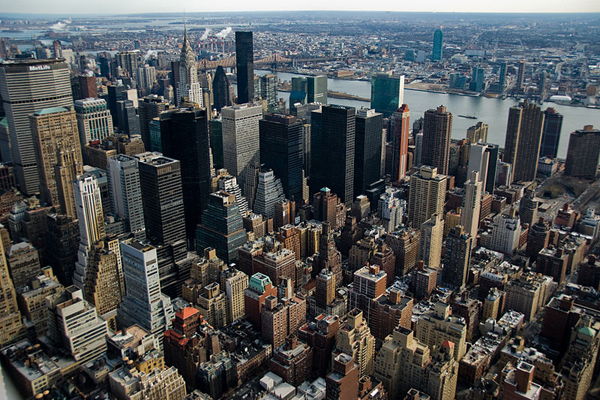Could the 'Big One' Hit DC or NY?

Because the tectonic faults on the East Coast of the United States are less active than those on the West Coast, less is known about them. Many East Coasters didn't even know there were active faults beneath their stomping grounds until today (Aug. 23), when buildings trembled all the way from Maine to South Carolina in the aftermath of a 5.8-magnitude quake in Virginia.
"The faults that produce these earthquakes are really not very well mapped because they don't move very frequently, and so they don't produce the types of features at the surface that we typically see with more-active faults," said David Schwartz, a United States Geological Survey earthquake geologist.
In light of today's rude awakening about the presence of these active faults: How hard could they shake? Could the "big one" ever hit the East Coast?
"It has been suggested that earthquakes as large as magnitude 7.5 could occur on some faults in the East Coast, and certainly the earthquakes of 1811 and 1812 were in that general magnitude," Schwartz told Life's Little Mysteries, a sister site to LiveScience. The earthquakes he mentioned destroyed much of Charleston, S.C. "The question is, where will they actually occur; what faults will they occur on? In the West Coast we have a pretty good idea of what faults will produce large earthquakes. On the East Coast we have a pretty poor understanding of which faults would do this."
In fact, potentially dangerous faults are still being discovered on the East Coast.
An analysis of seismic data by researchers at Columbia University's Lamont-Doherty Earth Observatory three years ago revealed a significant active seismic zone running at least 25 miles from Stamford, Conn., to New York's Hudson Valley. In Peekskill, N.Y., it passes less than a mile north of the Indian Point nuclear power plant. The study authors reported that the fault was "probably capable of producing at least a magnitude-6 quake."
By analyzing the frequency of past temblors, the Columbia seismologists also estimated that magnitude- 5.0 earthquakes happen near New York City every 100 years. With a quake that strong, "we'd see billions in damage, with some brick buildings falling. People would probably be killed," said study co-author John Armbruster. [Can Humans Cause Earthquakes?]
Get the world’s most fascinating discoveries delivered straight to your inbox.
Furthermore, the scientists said, fault lengths and stresses suggest magnitude-6 quakes (which would be 10 times as energetic as a magnitude-5) take place in the area every 670 years. They estimated that magnitude-7 temblors (10 times more powerful than magnitude-6) occur every 3,400 years.
Even if a magnitude-7 earthquake occurred far from New York City, Washington or another large East Coast city, it could cause significant damage there, Schwartz said. "The crust in the East is different than in the West. It's older and colder and denser, and as a result, seismic waves travel much further. A magnitude-6 earthquake will be felt over a much broader area there than it would be [on the West Coast]."
And unlike on the West Coast, there are no earthquake-safety requirements for buildings in Eastern cities. "Just think of all of those buildings in Brooklyn built in the late 1800s," Schwartz said. "Nothing was constructed with seismic shaking in mind."
This article was provided by Life's Little Mysteries, a sister site to LiveScience. Follow us on Twitter @llmysteries, then join us on Facebook. Follow Natalie Wolchover on Twitter @nattyover.
Natalie Wolchover was a staff writer for Live Science from 2010 to 2012 and is currently a senior physics writer and editor for Quanta Magazine. She holds a bachelor's degree in physics from Tufts University and has studied physics at the University of California, Berkeley. Along with the staff of Quanta, Wolchover won the 2022 Pulitzer Prize for explanatory writing for her work on the building of the James Webb Space Telescope. Her work has also appeared in the The Best American Science and Nature Writing and The Best Writing on Mathematics, Nature, The New Yorker and Popular Science. She was the 2016 winner of the Evert Clark/Seth Payne Award, an annual prize for young science journalists, as well as the winner of the 2017 Science Communication Award for the American Institute of Physics.



